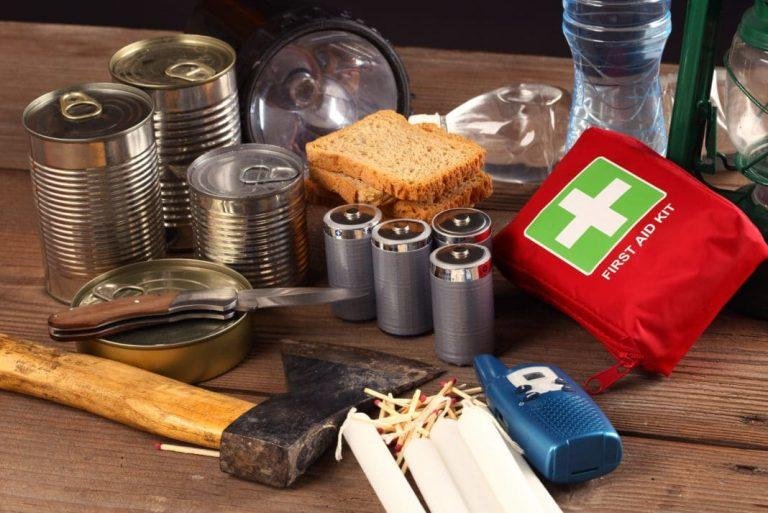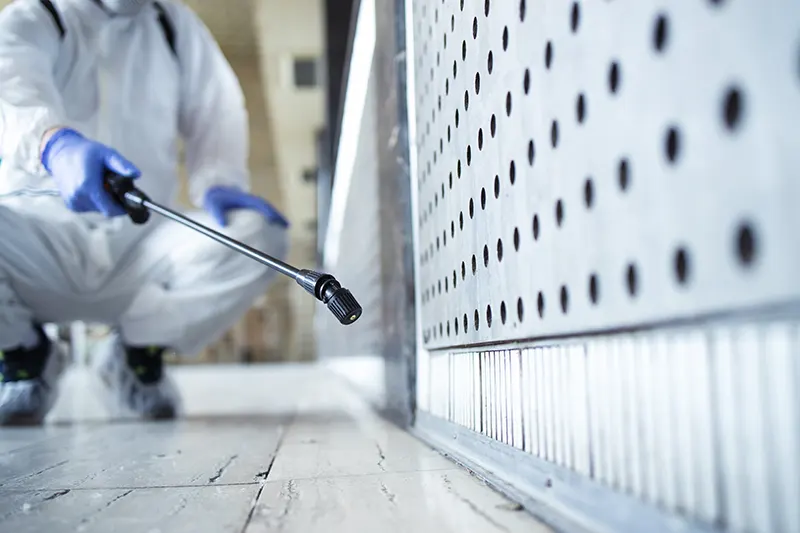Congratulations! You finally completed the buying process and now you own your house. But you better not get super excited and relaxed in your new home. The excitement of owning a new property is undoubtedly overwhelming, but there are some essential tasks to tackle to ensure a smooth transition into your new home. Here’s a guide on the first things to do after buying a house in the vibrant city of Toronto.
Now it’s time to customize your new house based on your personal needs, such as painting it in your desirable colour. So create a checklist of all the important things you should do. For more safety, do everything on the checklist before you move in. The very first things you might want to do include:
1. Change All the Locks and Key Codes
Security is paramount when moving into a new home. You can’t be sure who might have keys to your property from the previous owners. To safeguard your home and loved ones, it’s crucial to change the locks on all exterior doors.
Before you move into your new home, change the door locks. It doesn’t cost much. Changing each deadbolt per lock may charge you only $30. You should also reset the key codes on the garage doors.
Purchase a new security box or reprogram the old one. There are many tutorials online you can use. Check if the motion lights and security lights of the house are working properly.
2. Deep Clean the House
You better start the first days cleaning everything before you move all your stuff in. Clean the kitchen and bathrooms deep and thoroughly. If the house was vacant for a while, concentrate more on cleaning the cabinets before you arrange all your dishes. Wipe inside and outside the cabinets with a strong but non-toxic cleaner. Or for more reassurance, use a pest removal service.
Don’t forget to check gutters, backyard, chimney and dryer vents. Clean the dryer vent. Dirty dryer vent has a fire hazard. You should also clean the fridge coils annually. This will make it last longer.
Steam clean all the carpets before you move the furniture in. you can use the help of a professional carpet cleaning service or rent a steam cleaner and do it yourself.
3. Paint Your House
If you are going to paint the house, now is the best time. Painting an empty house would be so much easier than a house full of furniture. In this case, you don’t need to be worried about the paint splashing on the furniture. Besides, it won’t be necessary to move furniture around.
4. Update Your Address
Notify all relevant parties and organizations of your change in address. This includes the post office, banks, credit card companies, utility providers, and any other entities that need to send you important mail. Ensuring your bills and important documents reach you is essential.
People, companies, friends and family need to find you. So send your new house address to your friends, banks, employees or HR department and creditors. Switch the address of your gas, water, and electric bills to be sent on your name.
5. Bills, insurance and warranty
Make sure the previous owner has no unpaid bills or debts; that would cause many problems in the near future, your solicitor will help you with that. Talk to your real estate agent about the fact that whether your new property can affect the other insurance policies or not.
Don’t forget to secure homeowners’ insurance for your new property. It’s essential to have coverage in place to protect your investment. Shop around for the best insurance policy that suits your needs and budget.
Think about flood insurance according to your region. Set up your mortgage and utility payments on autopay. This will make sure that your gas, water, electric, Internet, and cable/television will not cut off.
Home warranties are recommended for everybody. You can even purchase one after closing. Review the specific services under cover. It includes home’s major systems or appliances, such as air conditioner, plumbing, or just reset the key codes. The warranty company will send somebody whenever you need.
6. Buy a fireproof safe for documents
If you still don’t have a fireproof file box or a safe, buy one. Keep all the important home documents and copies in the fireproof safe.
You can also store your family’s birth certificates, car titles, and inspection report of the house in that. Save your mortgage and insurance documents somewhere safe to avoid getting them lost.
7. Maintenance Plan
First check all HVAC maintenance. You should change the HVAC filters every one to three months (at least once a season). It helps you to save cooling and heating energy and helps your unit to last longer.
The house must have a fire and carbon monoxide detectors. Install a fire detector in the kitchen and another one for each floor. You can put them in a hallway leading to the bedrooms. Change the batteries of all your smoke and carbon monoxide detectors to make sure they are working properly (change the batteries every six months).
If you don’t clean the vents and ducts, the dryer of your house can cause a disaster. You better at least check the dryer vent a few times a year to ensure it’s working okay. Don’t forget to clean your gutters once a year. If you have trees around the house, clean it more frequently.
Another important task is to check the temperature of the water heater. Rinse all the sediment in the water heater tank once a year. In case the house has a tankless water heater, try to use the help of a professional to descale once a year. Make sure the tank shows no signs of leak.
You can use the inspection report of the house to make a maintenance plan for each item. This can avoid the future and more expensive repairs. Set a reminder if you have a family calendar. Keep a specified amount of budget aside for unexpected repairs each year.
8. Locate everything in case of emergency
Get to know your house better. Find the main water shut-off valve and gas shut-off valve. They may be in the garage, in the basement or crawl space. If you plan to go out of town or if a plumbing emergency happened, you better know how to turn off the main water valve.
Find the circuit box, all the fuses or switches should be well-labeled.
It is recommended to have an emergency kit. You better keep your emergency kit where you’ll remember. The kit should include important items, such as a first aid kit, flashlight, batteries, cell phone backup batteries, blankets, water and canned food.
9. Join the Community
Toronto is a diverse and welcoming city. Get to know your neighbors and start building a sense of community. Attend local events, join clubs, or participate in community initiatives to connect with fellow Torontonians.
You are new in the neighborhood. Go and introduce yourself to your new neighbors! They can help you to find out what’s going on in the neighborhood. You can also use their recommendations for good restaurants, handymen, services around, night watch plans, and so forth.
Take advantage of their information to know your new community. Go to community events and invite your neighbors over. You can throw a housewarming party!
10. Home Inspection and Repairs
Even if you had a pre-purchase home inspection, it’s a good idea to do a thorough walk-through of your new home. Make a list of any repairs or maintenance tasks that need attention. Addressing these issues early can save you time and money in the long run.
Prepare a list of all the things needed to repair or update. Make your list based on priority or urgency. If you ask a professional inspector, check all bids included in their contract (the cheaper ones may not include all the details).
11. Set Up Utilities
Ensure that all necessary utilities are connected and functioning in your new home. This includes electricity, gas, water, internet, cable, and any other services you rely on. Contact the respective service providers to arrange for transfers or new installations.
Before you move in, make sure that all of your utilities (water, gas and electricity) are working right.
12. Personalize Your Space
Now that you’re in your new home, it’s time to make it your own. Start by unpacking and arranging your belongings in a way that suits your lifestyle. Consider personalizing your space with new paint, decor, and furniture to reflect your style and preferences.
13. Familiarize Yourself with Local Services
Get to know your neighborhood and the local services available. Find the nearest grocery stores, pharmacies, hospitals, schools, and other essential services. This will make settling into your new community much more convenient.
14. Pest Control
Consider scheduling pest control services to inspect and treat your new home, even if there are no visible issues. Preventing pest infestations is often easier and less costly than dealing with them once they’ve taken hold.
15. Organize Your Move
If you haven’t already done so, plan and execute your move to your new home. Make sure you have packing materials, a reliable moving company (if needed), and a detailed plan for a smooth transition.
16. Other important things to do
Before you make any huge change in the decoration of the house, ask your real estate agent whether this improvement will finally deliver back to you or not. They will happily help you and share their knowledge about the best home improvements that add value to the resale price of your home.
If you are planning to change the furniture, try to make your final decision after you live in the house for a while. This will help you to know the available space better.
In the midst of all these practical tasks, take a moment to savor the joy of homeownership. Owning a house in Toronto is an exciting chapter in your life, and these initial steps will help you make a smooth transition into your new home. Enjoy the journey of settling into your piece of the city!
![RLPS Logo-V [1Col RGB]-01 RLPS Logo-V [1Col RGB]-01](https://torealestateagent.com/wp-content/uploads/elementor/thumbs/RLPS-Logo-V-1Col-RGB-01-ohdkdw2fqtxwk9umk2c95d4sl5au0r49wgcs41fj7k.png)






